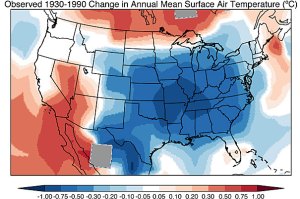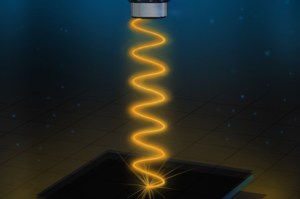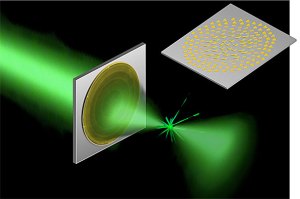Tag: Harvard School of Engineering and Applied Sciences
-
Science & Tech
An idea that changed the world
Harvard celebrates the 100th anniversary of a computational principle that was little noticed in its time, but that underlies all of modern science.
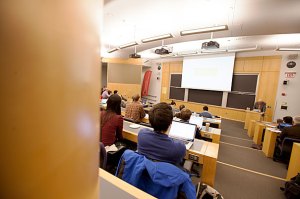
-
Campus & Community
Wonders of Wintersession
Wintersession and Winter Break offer many chances to try out a new skill or return to a passion.

-
Campus & Community
Pickles, prisms, and scientists
Celebrating its 11th year of public engagement, the Harvard School of Engineering and Applied Sciences’ (SEAS) Holiday Lecture Series dazzled and delighted audiences on Dec. 8 with a show guaranteed to kindle curiosity about the natural world.
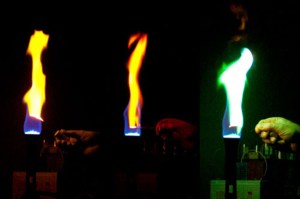
-
Science & Tech
For a day, geek is chic
Hundreds of students — hackers and newcomers alike — showed off their programming chops at Monday’s CS50 Fair, a raucous exhibit of mobile apps, websites, and other projects created for Harvard’s wildly popular computer science class.

-
Health
New way to model human disease
Researchers at the Wyss Institute for Biologically Inspired Engineering at Harvard University have mimicked pulmonary edema in a microchip lined by living human cells. They used this “lung-on-a-chip” to study drug toxicity and identify potential new therapies to prevent this life-threatening condition.
-
Science & Tech
Cautious geohacking
By tailoring geoengineering efforts by region and by need, a new model promises to maximize the effectiveness of solar radiation management while mitigating its potential side effects and risks.

-
Science & Tech
Applied physics as art
Harvard researchers spray-paint ultrathin coatings that change color with only a few atoms’ difference in thickness.
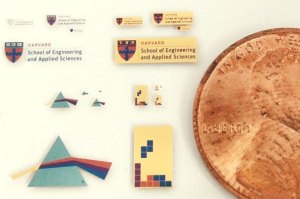
-
Science & Tech
An engineering landmark
The Harvard School of Engineering and Applied Sciences celebrates a landmark degree accreditation, and a broadening, flexible future of programs that break down academic barriers.

-
Science & Tech
Needle beam stays on point
A Harvard-led team of researchers has demonstrated a new type of light beam that propagates without spreading outward, remaining very narrow and controlled along an unprecedented distance. It could greatly reduce signal loss for on-chip optical systems and may eventually assist the development of a more powerful class of microprocessors.
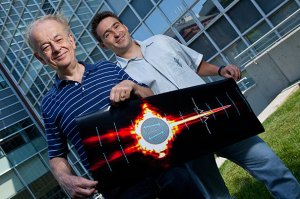
-
Campus & Community
No summer lull in learning
It was a busy summer of Harvard-supported learning on campus and in the neighboring communities.

-
Science & Tech
Super gel
A team of experts in mechanics, materials science, and tissue engineering at Harvard has created an extremely stretchy and tough gel that may suggest a new method for replacing damaged cartilage in human joints.
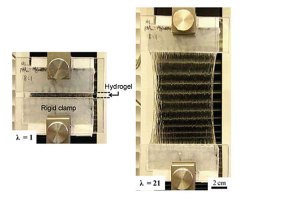
-
Science & Tech
Merging the biological, electronic
For the first time, Harvard scientists have created a type of cyborg tissue by embedding a 3-D network of functional, biocompatible, nanoscale wires into engineered human tissues.

-
Science & Tech
Action figures come to life
A group of graphics experts led by computer scientists at Harvard have created an add-on software tool that translates video game characters — or any other three-dimensional animations — into fully articulated action figures, with the help of a 3-D printer.
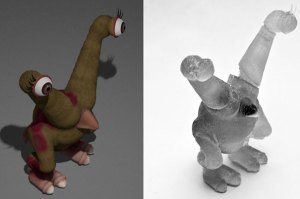
-
Health
Giving slime the slip
A team of Harvard scientists has developed a slick way to prevent the troublesome biofilms from ever forming on a surface.

-
Science & Tech
Airborne pollutants lead a double life
Researchers at Harvard University and the University of British Columbia (UBC) have provided visual evidence that atmospheric particles — which are ubiquitous, especially above densely populated areas — separate into distinct chemical compositions during their life cycle.

-
Science & Tech
NaCl to give way to RockSalt
A team led by Harvard computer scientists, including two undergraduate students, has developed a new tool that could lead to increased security and enhanced performance for commonly used Web and mobile applications.
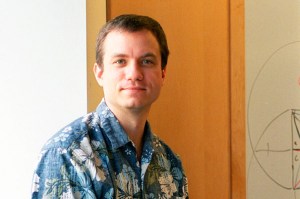
-
Science & Tech
Smart suit improves physical endurance
Harvard’s Wyss Institute for Biologically Inspired Engineering announced that it has received a $2.6 million contract from the Defense Advanced Research Projects Agency (DARPA) to develop a smart suit that helps improve physical endurance for soldiers in the field.

-
Science & Tech
Carbon counter
Atmospheric scientists at the Harvard School of Engineering and Applied Sciences (SEAS) and Nanjing University have produced the first “bottom-up” estimates of China’s carbon dioxide (CO2) emissions, for 2005 to 2009, and the first statistically rigorous estimates of the uncertainties surrounding China’s CO2 emissions.

-
Health
Clot-busting technology goes straight to work
Researchers at the Wyss Institute for Biologically Inspired Engineering at Harvard have developed a novel biomimetic strategy that delivers life-saving nanotherapeutics directly to obstructed blood vessels, dissolving blood clots before they cause serious damage or even death.
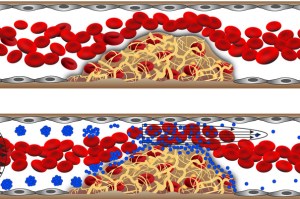
-
Science & Tech
Fuel cell keeps going after hydrogen runs out
Materials scientists at Harvard have demonstrated that a solid-oxide fuel cell (SOFC), which converts hydrogen into electricity, can also store electrochemical energy like a battery. This fuel cell can continue to produce power for a short time after its fuel has run out.
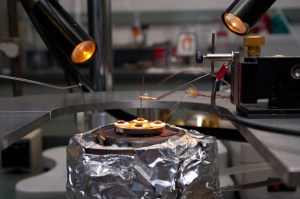
-
Campus & Community
Sampling Harvard, and science
Harvard hosted a Step UP/Project TEACH event for students and parents from the Hennigan Elementary School in Jamaica Plain and the E. Greenwood Leadership Academy in Hyde Park. The effort is part of a program to show young students what college is like, particularly in the sciences.

-
Science & Tech
Now, ice won’t stick
A Harvard team of researchers has invented a way to keep any metal surface free of ice and frost. The treated surfaces quickly shed even tiny, incipient condensation droplets or frost, simply through gravity.
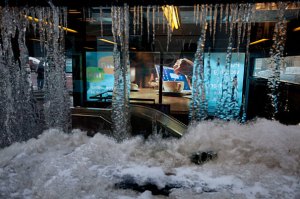
-
Science & Tech
A new master’s program
Harvard will offer a master’s degree in computational science and engineering.
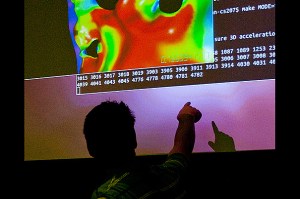
-
Science & Tech
Toxic mercury springs from a hidden source
Environmental scientists at Harvard have discovered that the Arctic accumulation of mercury, a toxic element, is caused by both atmospheric forces and the flow of circumpolar rivers that carry the element north into the Arctic Ocean.

-
Science & Tech
Crime probe
A Harvard engineering class helps find a metric for a computer scheme that tracks gang violence.

-
Science & Tech
Rethinking mitosis
The mitotic spindle, an apparatus that segregates chromosomes during cell division, may be more complex than the standard textbook picture suggests, according to researchers at the Harvard School of Engineering and Applied Sciences.

-
Science & Tech
‘Warming hole’ delayed climate change
Climate scientists at the Harvard School of Engineering and Applied Sciences (SEAS) have discovered that particulate pollution in the late 20th century created a “warming hole” over the eastern United States — that is, a cold patch where the effects of global warming were temporarily obscured.
